Comparison of EPA and DOS RRP Rule Requirements
NOTE: DOS (Department of Occupational Safety) is now called DLS (Department of Labor Standards)

The MA Division of Occupational Safety has released a very helpful comparison of the new MA RRP rule with the existing EPA RRP Rule. This comparison should help those doing RRP renovations under the recently enacted MA RRP Rule understand any difference between the two rules.
The following information is directly from the DOS web Site:
I. Applicability of Requirements
EPA: The EPA RRP Rule applies to renovation, repair and painting (RRP) work conducted for a fee in pre-1978 target housing and child-occupied facilities where the work involves the disturbance of more than 6 ft2 of painted surfaces per room or more than 20 ft2 of paint on exteriors (total), except that the quantity exemptions do not apply to any projects involving window replacement or demolition of structures.
DOS: Same as EPA.
II. Firms or Entities Requiring Licensure
EPA: All firms or other entities performing work subject to the Rule require certification as “Certified Firms.”
DOS: Firms or other entities performing work require licensure as “Lead-Safe Renovation Contractors,” except that the following entities may apply to DOS for a “Contractor License Waiver”:
1. Entities that perform regulated work in facilities that they own, using their own employees.
2. Entities that were certified by EPA (or a state delegated by EPA to administer EPA RRP Rule) prior to July 9, 2010.
DOS also allows Deleading Contractors licensed by 454 CMR 22.00 to perform regulated renovation work without being separately licensed as “Lead-Safe Renovation Contractors.” Entities applying for a “Contractor License Waiver” do not have to pay a fee for the waiver but must subsequently comply with all other provisions of 454 CMR 22.00, including the requirement to have the work supervised by a “Lead-Safe Renovator-Supervisor”, compliance with work practices (including cleanup), notifications, cleaning verification and recordkeeping.
III. Contractor Licensing Fee and Required Documentation
EPA: $300 for five years. Applicants must submit identifying information, list of professional certifications related to lead-based paint activity and list of previous violations related to lead-based paint activity.
DOS: $375 for five years. In addition to filling out identifying information on application form, applicant must:
1. Document that a person in a supervisory or management capacity has received the one-day Lead-Safe Renovator-Supervisor (“Certified Renovator”) training.
2. Document that a medical monitoring/respirator protection program is in place (entities with employees only). Program templates are on DOS’s website.
3. Submit information related to organization of the business or entity – corporate articles of organization, business certificate, etc., as applicable.
4. Submit lists of current and previous employees.
5. Document workers compensation coverage (entities with employees).
6. Affirm compliance with Massachusetts tax laws, including DOR, DUA, FSC.
7. Submit lists of occupational health and safety-related violations, notices of noncompliance, enforcement actions, etc.
IV. On-site Supervisor Requirement
EPA: EPA requires the supervisor (“Certified Renovator”) to be on site only during certain phases of the work (posting of Warning Signs, establishment of work area containments, during final cleanup and cleaning verification) and available by phone the rest of the time.
DOS: DOS requires the supervisor (“Lead-Safe Renovator Supervisor”) to be on site at all times when RRP work is in progress.
V. Training and Certification Requirement for Supervisor
EPA: EPA requires a one-day “Certified Renovator” course given by an EPA-certified training provider. Possession of the training certificate, which includes a digital image of the trainee, constitutes the certification – persons who possess this certificate do not have to apply to EPA directly. The one-day training course does not include respirator/personal protection training elements. The training/certification is good for five years, after which time the “Certified Renovator must take a one-half day refresher course. EPA allows persons who have taken the deleader-supervisor and deleader-worker courses to take a one-half day upgrade/refresher course to upgrade to “Certified Renovator” status.
DOS: DOS requires essentially the same one-day training course for certified “Lead-Safe Renovator-Supervisors” that EPA requires for “Certified Renovators” except that the DOS-required course includes respirator/personal protection training elements. Where the training is given in Massachusetts, the course must be given by a Massachusetts-licensed training provider. As is the case with EPA, possession of the training certificate, which includes a digital image of the trainee constitutes the certification – persons who possess this certificate do not have to apply to DOS directly. The training/certification is valid for five years, after which time the “Lead-Safe Renovator-Supervisor” must take a one-half day refresher course. DOS also allows persons who have taken the deleader-supervisor and deleader-worker courses to take a one-half day upgrade/refresher course to upgrade to “Lead-Safe Renovator-Supervisor” status. DOS also requires training providers to include “Lead-Safe Renovator-Supervisor” training elements in four-day training courses required for “Deleader-Supervisors” given after July 9, 2010, and DOS will therefore allow “Deleader-Supervisors” to function as “Lead-Safe Renovator-Supervisors” on renovation worksites after they have completed this training.
VI. Certification and Licensing Reciprocity between EPA and DOS
EPA: Firms or entities that have been licensed as “Lead-Safe Renovation Contractors” by DOS in Massachusetts must become certified with EPA as “Certified Firms” in order to carry out RRP work in states where EPA is running the RRP program. EPA allows individuals who have been trained/certified as “Lead-Safe Renovator-Supervisors” in Massachusetts to act as supervisors and perform the functions of “Certified Renovators” on RRP projects in other states where EPA is running the program without needing to obtain separate EPA certification as “Certified Renovators.”
DOS: DOS allows firms that were certified with EPA as “Certified Firms” prior to July 9, 2010 to perform RRP work in Massachusetts without becoming licensed by DOS as a “Lead-Safe Renovation Contractor,” provided that they have received a “Contractor Licensing Waiver” from DOS – there is no fee for this waiver. The “Contractor Licensing Waiver” application is on the DOS website. Contractors that apply for EPA certification after July 9, 2010 are required to pay the licensing fee and become licensed as “Lead-Safe Renovation Contractors” with DOS. DOS will allow “Certified Renovators” that have received training from EPA-approved training providers to perform the functions of “Lead-Safe Renovator-Supervisors in Massachusetts without further training or licensure.
VII. License/Certification Fees for Providers of RRP Training
EPA: EPA issues a four-year certification to lead training providers. Certification fees, which are assessed on a per-course basis, range between $400 and $870 per course. The charge for certification to give to the initial “Certified Renovator” training course is $560, and the charge to give the refresher course is $400. The charge for renewing the certification in either discipline is $340. The training provider certification fee is waived for providers who are state and local governments, federally recognized Indian Tribes and non-profit organizations.
DOS: DOS issues a one-year license to lead training providers and charges a flat licensing fee of $1775, regardless of the number of lead training course disciplines in which the trainer is seeking approval to provide training. DOS has the same licensing fee waiver as EPA for training providers who offer only RRP training and are state and local governments, federally recognized Indian Tribes and non-profit organizations.
VIII. Work Practice Requirements
EPA: The set of work practice requirements specified by EPA’s RRP Rule is a somewhat relaxed version of the work practices currently required for deleading projects. As opposed to what is required for deleading projects, units undergoing renovation are not required to be unoccupied while the work is in progress; it is only required that persons be excluded from the work area, which must be isolated from the rest of the dwelling or child-occupied facility by appropriate means. Plastic sheeting, which must be disposed after each use, must be used to cover floors and other surfaces on building interiors and plants and ground on exteriors. EPA specifies the use of a “cleaning verification” procedure, which is carried out by the on-site ”Certified Renovator” to determine if interior work areas have been adequately decontaminated. Under this procedure, the color of a wiping cloth, that is used to wipe down the work area following the final cleaning, is compared to the color of a standard “cleaning verification card” issued by EPA. If the color of the wiping cloth is the same shade as (or lighter than) the cleaning verification card, the area “passes.” Dust-wipe clearance, as is used to clear deleading projects, may also be used to “clear” RRP projects.
DOS: DOS’ work practice requirements for RRP work are almost identical to those required by EPA, except that DOS allows the use of tarpaulins to cover plants and ground on exterior projects, provided that the tarpaulins are thoroughly decontaminated after each use and not subsequently used for any interior work in target housing and child-occupied facilities.
Click here to find this information at the DLS web site
 As EPA amends the RRP rule, renovators working in states that have taken over the rule from EPA need to know if and how these states incorporate the changes into their own rule. Yesterday I inquired with the State of Massachusetts to find out about a few recent amendments and changes.
As EPA amends the RRP rule, renovators working in states that have taken over the rule from EPA need to know if and how these states incorporate the changes into their own rule. Yesterday I inquired with the State of Massachusetts to find out about a few recent amendments and changes.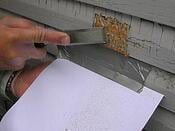 Question: Can you tell me if MA allows the lead safe renovation supervisor to take paint chip samples same as EPA does?
Question: Can you tell me if MA allows the lead safe renovation supervisor to take paint chip samples same as EPA does?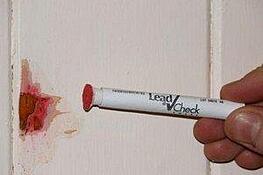 Question: Also, does MA now recognize LeadCheck for Drywall and Plaster?
Question: Also, does MA now recognize LeadCheck for Drywall and Plaster?
 Looking for accurate information about the EPA RRP rule?
Looking for accurate information about the EPA RRP rule?  Yesterday
Yesterday  In my opinion, the ability to work with and interact with the same people who not only enforce the rule in MA, but also have the ability to help shape the MA RRP rule, has been a major plus for those Massachusetts contractors affected by the rule. At the budget hearing I shared this opinion and stressed that I hoped DOS would get adequate budgeting to keep such communication opportunities available in the future. Here are a few of the items I suggested at the hearing:
In my opinion, the ability to work with and interact with the same people who not only enforce the rule in MA, but also have the ability to help shape the MA RRP rule, has been a major plus for those Massachusetts contractors affected by the rule. At the budget hearing I shared this opinion and stressed that I hoped DOS would get adequate budgeting to keep such communication opportunities available in the future. Here are a few of the items I suggested at the hearing: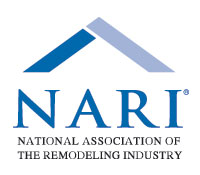
 The Commonwealth of MA Executive Office of Labor and Workforce Development will be holding public hearings where interested parties can attend to provide suggestions to Joanne F. Goldstein, the Secretary of Labor and Workforce Development, regarding how the money appropriated to the Department of Labor (DOL) and the Division of Occupational Safety (DOS) should be spent in Fiscal Year 2012.
The Commonwealth of MA Executive Office of Labor and Workforce Development will be holding public hearings where interested parties can attend to provide suggestions to Joanne F. Goldstein, the Secretary of Labor and Workforce Development, regarding how the money appropriated to the Department of Labor (DOL) and the Division of Occupational Safety (DOS) should be spent in Fiscal Year 2012. Proper and effective administration and enforcement of the RRP rule will take money. Because the amount of money the DOS and DOL will get in 2012 is already decided, contractors must voice their opinion as to how they think the money should be spent. It is my opinion that the money could actually be invested in the health and safety of Massachusetts citizens to protect them from the dangers associated with contractors who ignore lead-safe work practices. And, if properly and adequately enforced, the RRP rule would not only help to eliminate the underground construction economy here in Massachusetts, it would also help bring in additional revenue for the state in fees to those who get licensed to do the work, in fines to those who operate illegally and in taxes collected if all construction businesses doing RRP work have to pay their equal share of payroll and income taxes.
Proper and effective administration and enforcement of the RRP rule will take money. Because the amount of money the DOS and DOL will get in 2012 is already decided, contractors must voice their opinion as to how they think the money should be spent. It is my opinion that the money could actually be invested in the health and safety of Massachusetts citizens to protect them from the dangers associated with contractors who ignore lead-safe work practices. And, if properly and adequately enforced, the RRP rule would not only help to eliminate the underground construction economy here in Massachusetts, it would also help bring in additional revenue for the state in fees to those who get licensed to do the work, in fines to those who operate illegally and in taxes collected if all construction businesses doing RRP work have to pay their equal share of payroll and income taxes.  Massachusetts, one of the states delegated by EPA to administer and enforce the RRP rule, released a new form and protocol to be used by Massachusetts licensed lead inspectors when doing testing for lead prior to a RRP project. Although under the Massachusetts and EPA RRP rules a certified renovator can use EPA approved test kits to do this testing, as an alternative some home owners and renovators may elect to have the testing done by a lead testing professional. The following article was written by
Massachusetts, one of the states delegated by EPA to administer and enforce the RRP rule, released a new form and protocol to be used by Massachusetts licensed lead inspectors when doing testing for lead prior to a RRP project. Although under the Massachusetts and EPA RRP rules a certified renovator can use EPA approved test kits to do this testing, as an alternative some home owners and renovators may elect to have the testing done by a lead testing professional. The following article was written by 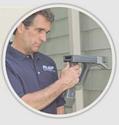

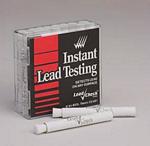 RRP Assessment report or from a Lead Safe Renovator who has used an EPA approved lead based paint test kit to test surfaces for lead, to all tenants or potential buyers.
RRP Assessment report or from a Lead Safe Renovator who has used an EPA approved lead based paint test kit to test surfaces for lead, to all tenants or potential buyers. If RRP instructors follow the EPA created instructor training manual when training renovators, they will be teaching students to do things that violate OSHA rules. (
If RRP instructors follow the EPA created instructor training manual when training renovators, they will be teaching students to do things that violate OSHA rules. ( Current OSHA and RRP related rules and training seems to concentrate on what not to do, without enough time and attention on the right way to do things. With OSHA for example, fall protection rules require a business to put fall protection equipment in place and train workers when and how to use. Great, but why not also complement it with training on methods for working safely and how to avoid putting yourself in a position to fall?
Current OSHA and RRP related rules and training seems to concentrate on what not to do, without enough time and attention on the right way to do things. With OSHA for example, fall protection rules require a business to put fall protection equipment in place and train workers when and how to use. Great, but why not also complement it with training on methods for working safely and how to avoid putting yourself in a position to fall?  For RRP, the required training teaches how to contain dust and debris so it won’t spread outside the contained work area. Might renovators who follow these instructions only be increasing the health risks to workers by containing and concentrating the dust and debris in the confined work area? Wouldn’t it make sense to also train workers on lead-safe work practices that actually limit or prevent the creation of dust to begin with?
For RRP, the required training teaches how to contain dust and debris so it won’t spread outside the contained work area. Might renovators who follow these instructions only be increasing the health risks to workers by containing and concentrating the dust and debris in the confined work area? Wouldn’t it make sense to also train workers on lead-safe work practices that actually limit or prevent the creation of dust to begin with?  Variances in the rule requirements, from the EPA RRP rule and also from state to state, will make it difficult for renovators to understand the differences and keep up with amendments made by each entity. Renovators working in more than one state many have to become certified firms in each state they operate in and or also with the EPA. Are renovators better off if their states write a better thought out rule? Would renovators be better served if there was just one well written rule for everyone to follow? I predict that confusion may likely contribute to violations and fines for these renovators.
Variances in the rule requirements, from the EPA RRP rule and also from state to state, will make it difficult for renovators to understand the differences and keep up with amendments made by each entity. Renovators working in more than one state many have to become certified firms in each state they operate in and or also with the EPA. Are renovators better off if their states write a better thought out rule? Would renovators be better served if there was just one well written rule for everyone to follow? I predict that confusion may likely contribute to violations and fines for these renovators.  The MA DOS has also started conducting on-site inspections. Though most inspections are triggered by citizens reporting suspected violations, the DOS is also out in the field and is stopping by renovation projects as they come across them. In one of his recent blogs, RRP certification training provider and business coach, Mark Paskell of The Contractor Coaching Partnership, shares a
The MA DOS has also started conducting on-site inspections. Though most inspections are triggered by citizens reporting suspected violations, the DOS is also out in the field and is stopping by renovation projects as they come across them. In one of his recent blogs, RRP certification training provider and business coach, Mark Paskell of The Contractor Coaching Partnership, shares a 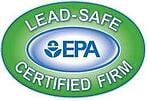
 Please make sure you are informed regarding any of the opinions you share or accusations you might make at the hearing. If you express concerns or ask questions that are already addressed in the rule and or amendments, you will certainly lose credibility. If this were to happen, you might also compromise the efforts of others, particularly industry trade groups like EM NARI and or BAGB, if you identify yourself as a member of one of these associations at the hearing. That said I hope you will join those of us who want to help our industry make the best of this new reality by being a passionate and at the same time a professional voice at the hearing.
Please make sure you are informed regarding any of the opinions you share or accusations you might make at the hearing. If you express concerns or ask questions that are already addressed in the rule and or amendments, you will certainly lose credibility. If this were to happen, you might also compromise the efforts of others, particularly industry trade groups like EM NARI and or BAGB, if you identify yourself as a member of one of these associations at the hearing. That said I hope you will join those of us who want to help our industry make the best of this new reality by being a passionate and at the same time a professional voice at the hearing.


